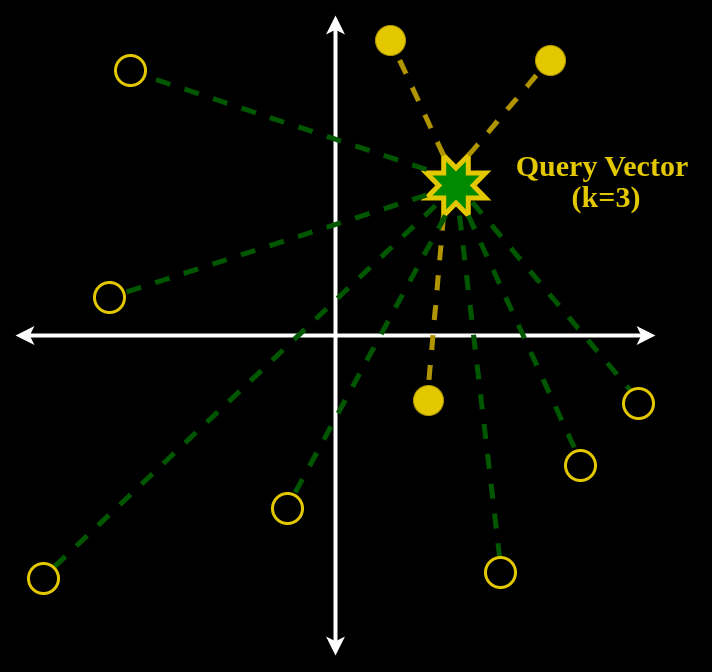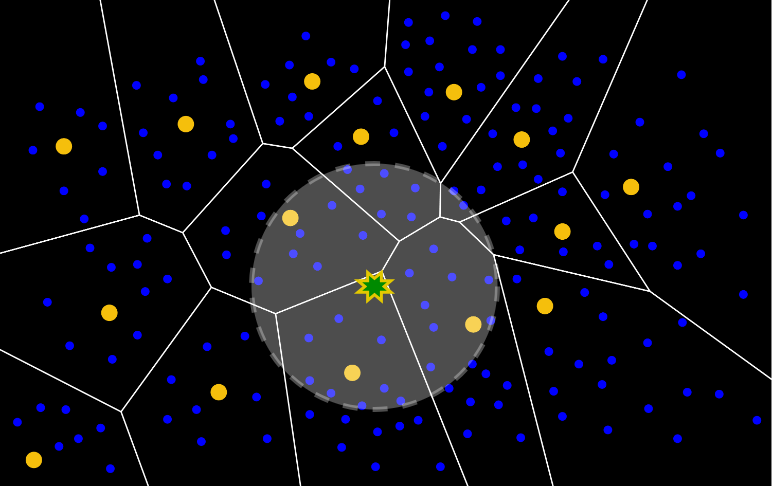New Knowledge Discovery and Data Fabric Traversal Capabilities
Overview
This guide outlines the different data discovery methods available within R!AN. Understanding these methods is integral for efficiently discovering data and generating meaningful insights.
Retriever-Based Search
Retriever-based search is designed to find relevant documents and contexts using natural language queries. It utilizes Attention-Based Graph Embeddings to perform similarity searches over the data fabric, focusing on retrieving data points that are semantically similar to the query. This approach is efficient for quickly identifying relevant information.

Figure 1: The query is transformed into a vector representation. The algorithm retrieves the top-k vectors in the data fabric that are most similar, representing the most relevant documents or data points.
Key Features:
- Natural Language Queries: Supports quick searches using natural language, enhancing user experience.
- Similarity-Based Retrieval: Retrieves data points based on their semantic similarity to the query, providing relevant results efficiently.
Traverser-Based Search
Traverser-based search uses graph traversal techniques to explore connections between entities within the data fabric. This method provides a deeper understanding of interconnected data, uncovering hidden connections and patterns that might be missed by retriever-based methods.

Figure 2: A query vector identifies relevant embeddings within the data fabric. The traversal process then explores surrounding data points, uncovering related entities and connections for broader contextual understanding.
Key Features:
- Graph Traversal: Utilizes traversal techniques to explore and analyze connections between data points, providing a comprehensive view of the data.
- Complex Query Handling: Suitable for complex queries that require an understanding of data relationships, going beyond simple similarity searches.
Advantages of Traverser-Based Search:
- Richer Insights: By traversing the data fabric, this method uncovers deeper connections and patterns within the data, offering more detailed and insightful results.
- Enhanced Data Connectivity: It reveals hidden connections between data points, leading to a more holistic understanding of the data.
- Advanced Query Capabilities: Traverser-based search can handle more complex queries, leveraging the interconnected nature of the data to provide answers that are both relevant and actionable.
Summary
Both retriever-based and traverser-based searches have unique strengths that cater to different types of queries and data analysis needs. Retriever-based search is ideal for quick, similarity-based searches using natural language queries, enhanced by the use of Attention-Based Graph Embeddings. Traverser-based search, on the other hand, excels in exploring complex relationships within the data through graph traversal, offering deeper insights and a more comprehensive understanding of the data landscape.
By leveraging these advanced search methods, R!AN empowers users to extract meaningful insights from their data, tailored to their specific requirements and contexts.